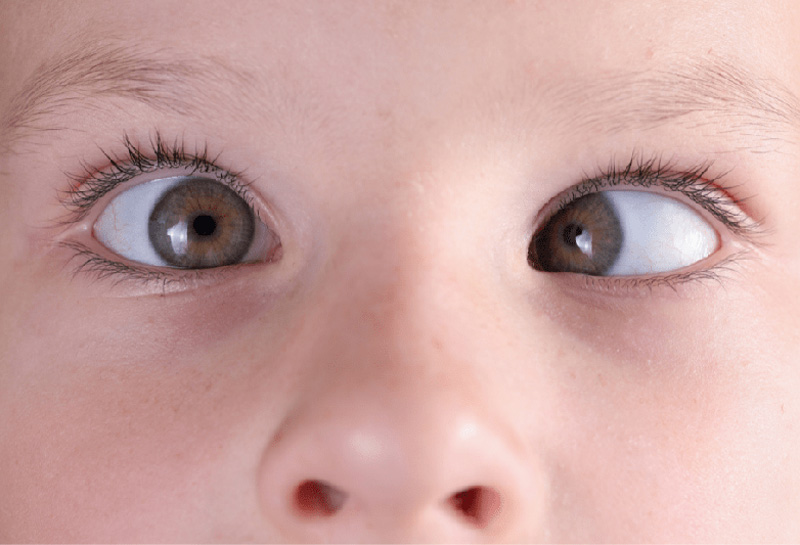What is Strabismus? Strabismus Symptoms and Treatment
Dr. Taylan Öztürk

What is Strabismus? Strabismus Symptoms and Treatment
What is strabismus?
Strabismus is a condition in which the eyes are aligned differently than normal. The eyes may shift inwards, outwards, upwards or downwards. In strabismus, one or both eyes are not aligned properly.
This can lead to vision problems and aesthetic concerns. This condition can occur in children and adults and can cause various complications if left untreated.
Types of Strabismus
Strabismus can be of several different types:
- Infantile Strabismus: This is the type of strabismus seen in childhood and is usually congenital.
- Adult Strabismus: This is the type of strabismus that develops in adulthood. It can occur for various reasons.
- Isolated Strabismus: One of the eyes is constantly in an abnormal direction.
- Rotational Strabismus: It occurs when the eyes turn to the right or left and usually one eye is at a different angle than the other.
Causes of Strabismus
Strabismus can have many causes. These include
- Congenital causes: Problems in the nerve connections between the brain and the eye muscles, such as imbalance of the eye muscles.
- Acquired (acquired) causes: Eye infections, eye injuries, brain tumors, stroke.
Types of Strabismus
Strabismus is divided into different types according to the direction of eye shift:
- Conjugate strabismus: Both eyes shift in the same direction.
- Alternating strabismus: The eyes alternately shift inward or outward.
- Fixed strabismus: One eye always shifts in the same direction.
Şaşılığın BelirtilerSymptoms of Strabismus
Early Symptoms
Symptoms of strabismus usually begin with changes in the normal alignment of the eyes:
- Abnormal Orientation of the Eyes: The eyes look in a different direction than normal.
- Flickering or Movement of the Eyes: Constant trembling or movement of the eyes.
- Vision Problems: Blurred or double vision.
Progressive Symptoms
Symptoms become more pronounced as strabismus progresses:
- Eye Fatigue: Difficulty focusing the eyes for long periods of time.
- Vision Loss: Decrease or loss of vision.
- Aesthetic Concerns: Aesthetic problems due to misalignment of the eyes.
Diagnosis of strabismus
Eye Examination
Strabismus is diagnosed through a comprehensive eye examination. The diagnostic process includes the following:
- Eye Movement Tests: Examination of the movement and alignment of the eyes.
- Vision Tests: Visual acuity and the strength of the eye muscles are assessed.
- Prism Covering Tests: Measurement of the amount of deviation of the eyes from normal using some special glass prisms.
- Refractive Error Evaluation: Pupils are dilated by instilling medication and refractive error is measured. In the presence of severe refractive error, correction with glasses can provide a solution without surgery.
- Eye Bottom Examination: Treatment of strabismus becomes more difficult in case of any pathology that may cause low vision.
Imaging Tests
Various imaging tests can be performed to determine the size and extent of strabismus:
- Eye Ultrasound: Visualization of the intraocular structures and muscles.
- OCT (Optical Coherence Tomography): It provides detailed information about the retina and other structures in the eye.
Treatment Methods for Strabismus
Spectacle and Prism Lenses
Glasses and prism lenses are the main methods used to treat strabismus. These methods can help to align the eyes correctly.
- Spectacles: Specially designed lenses to help align the eyes.
- Prism Lenses: It helps align the eyes by refracting light.
Eye Exercises
Eye exercises can help strengthen and align the eye muscles. These exercises allow the eye muscles to work in a coordinated way.
- Convergence Exercises: Allows the eyes to focus on the near.
Divergence Exercises: Supports the eyes to focus on long distances.
Closure Treatments
Some types of strabismus can be treated without surgery by correcting the refractive error of the eyes with glasses and adjusting the closure treatments.
Intramuscular Botox Applications
Botox can be applied to the muscle that overworks and causes imbalance in the gaze position, and treatment can be provided in strabismus that develops for a short time and has the possibility of spontaneous recovery.
Surgical Intervention
Surgery to treat strabismus is done to reorganize and align the eye muscles. Surgical methods allow the eyes to return to their normal alignment.
- Eye Muscle Surgery: Surgical intervention performed by changing the position of the eye muscles.
- Eyelid Surgery: Regulation and correction of eyelid muscles.
Things to Consider in Strabismus Treatment
Regular check-ups: During the treatment process, it is important not to interrupt the controls recommended by the ophthalmologist.
Compliance with glasses and closure treatment: Uninterrupted compliance with the glasses prescribed by the doctor and the recommended closure treatments is very important.
Attention to eye health: It is necessary to take precautions to prevent eye strain, such as using sunglasses.
Strabismus and Quality of Life
If left untreated, strabismus can have negative effects on social relationships, school success and psychological status.
Strabismus Treatment Cost and Duration
The cost of strabismus treatment varies depending on the age of the patient, the type and severity of strabismus, the treatment methods used and the location of the hospital. The cost may increase in cases requiring surgical treatment. The duration of treatment can last from a few weeks to several months depending on the patient’s condition.
Important Note: This information is for general information purposes and is not a substitute for medical advice. If you have any complaints about strabismus, you should consult an ophthalmologist.
How can we help you treat strabismus?
If you see signs of strabismus in your child or yourself, consult an ophthalmologist for early detection and treatment. Early treatment can prevent vision loss and allow your child to lead a normal life.
As Dr. Taylan Öztürk, we offer you the best service with our expert team in strabismus treatment.
Contact us now to make an appointment!